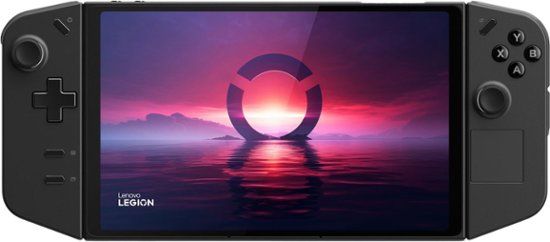Key Takeaways
- Most modern Steam games require higher specs than handheld PCs have.
- Graphics can be scaled down for playable frame rates on handhelds.
- CPUs in handhelds are crucial, modern GPU features benefit these systems.
Following the release of the Steam Deck, handheld gaming PCs have really come into their own. These little powerhouses can often do a decent job of playing the latest games and the massive PC back catalog, but how can that be when their specifications are actually pretty modest when you look under the hood?
Most Modern Steam Game Requirements Are Above Handheld PC Specs
If you look at current PC releases on platforms like Steam, you’ll see that most modern games have requirements that are above what handheld gaming PCs are packing. This is particularly true in the case of the GPU inside these tiny computers. A GTX 1060 is typically the lowest that minimum specifications can go for anything reasonably modern. However, the GPU in the popular Z1 Extreme APU found in most popular handheld PCs has performance closer to the GTX 1650, and the GPU in the Steam Deck is even slower than that!
It’s Almost Always Possible to Reduce Graphics
Despite this relatively “slow” GPU, folks (myself included) are having a pretty good time playing games that technically need more GPU power than this on our handhelds. The main reason for this is how scaleable video game graphics are, and what you consider “playable” frame rates. If we put our console goggles on, and consider anything above 30fps acceptable, then you can dial things down on just about any game in existence for handheld play.
Add to this that the smaller screens of these systems don’t benefit from most higher graphical settings, because the extra detail and fidelity just isn’t visible on a seven- or eight-inch screen, and everyone’s a winner. If your target is 800p at 30fps, then the floor suddenly drops out of your GPU requirements.
The CPU Is the Real Limit
When producing the hardware for the Steam Deck, ROG Ally, and other similar systems, the architects wisely decided that the one component they could not cheap out on is the CPU. Unlike graphics, there’s a certain floor below which the CPU-driven parts of a video game simply cannot go. These systems are tied to the basic design and function of the game itself. If you simplify them, it’s no longer the same game.
The CPUs in these handheld system are truly desktop-class. At least insofar as the needs of a video game is concerned. It’s also why you can dock something like a ROG Ally and use it as your day-to-day computer without breaking a sweat, and even connect it to an external GPU and have desktop-class gaming performance. Gamers tend to overlook the importance of CPUs when it comes to frame rates, but the truth is that if you’re faced with a CPU bottleneck in a game, no amount of setting tweaks will improve the situation.
Modern Graphics Tricks Help!
I currently have a Lenovo Legion Go, which comes with a 2560×1600 screen. That’s four times the resolution of the 800p Steam Deck display, but it surely doesn’t have four times the horsepower to drive it. Yet in the very latest games that support upscaling technology such as AMD’s FSR 2, I can run a game at the same resolution as the Steam Deck but have it look much sharper thanks to the extra pixels available on the display.

Lenovo Legion Go
Although not without its issues, the Lenovo Legion Go’s large display, removable controllers, and versatility make it a top choice among PC gaming handhelds.
Likewise, various modern GPU features and developer tricks that have helped games shine on consoles, are also paying dividends on handheld PCs. Also, again, most of the downsides of these tricks that are readily visible on a TV or big PC monitor, are hidden by the smaller displays on handhelds.
To top it all off, many developers have opted to add special “Steam Deck” presets into their games, which are optimized to run on these lower-spec handheld PCs. This is a great starting point for tuning your current and future handhelds in each game, and I don’t think this new hardware category is going anywhere soon. So, the minimum requirements for a handheld PC? It turns out they’re more flexible than you might think.






